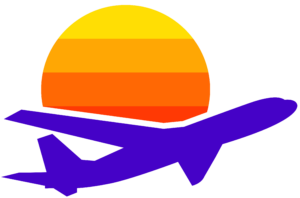Traveling to remote ski communities in the western United States has historically been a challenge due to the lengthy drives and difficult mountain passes. However, there is good news for ski enthusiasts and the towns and resorts that rely on their business. Airlines are planning to increase the number of flights to these destinations, making it easier than ever to fly directly to these remote ski towns. This increase in airlift is a significant development for Western ski resorts, such as Jackson Hole in Wyoming, which have often been perceived as difficult to access.
According to an analysis of flight schedule data, airlines are expected to offer 36.3% more seats between January and March 2024 compared to the same period in 2019. The seat count will also be up 7.9% from 2023. This increase in airlift is a result of airlines recognizing the growing demand for travel to these remote ski destinations. The airports included in this analysis offer convenient access to popular ski resorts like Jackson Hole, Steamboat, Telluride, Crested Butte, Vail, Aspen, Mammoth Mountain, Sun Valley, Big Sky, and Whitefish.
The improved accessibility of these ski towns is not only beneficial for travelers but also for the towns and resorts themselves. It enables these destinations to attract more visitors and boost their local economies. Previously, travelers had to rely on larger urban airports such as Denver, Salt Lake City, and Reno for their ski trips. However, with the increase in airlift, travelers can now fly directly to their desired ski destinations, saving time and making the overall travel experience more convenient.
Airlift is a crucial competitive tool for remote ski towns. Despite the overall reduction in airline service to small markets, these ski destinations have experienced significant growth. The demographic of high-income visitors who frequent these ritzy ski resorts is particularly enticing for airlines. The same demographic often overlaps with corporate and high-income travelers who are more likely to hold elite status with airlines. This mutual benefit creates a strong incentive for airlines to provide more flights to these ski communities.
The airports serving these ski towns play a vital role in attracting airlines. For example, the Eagle County Airport in the Vail area tends to draw passengers who are willing to pay more for a quicker travel experience. However, flights to these airports are not always pricey, particularly when traveling during weekdays and avoiding holiday periods. United Airlines dominates the destination ski market in the United States and will offer the most seats to these 12 destinations during the first quarter of next year, followed closely by Delta and American.
While ski towns offer commercial appeal for airlines, convincing carriers to serve these small communities can be challenging. To secure air service, these destinations sometimes need to provide airlines with minimum-revenue guarantees. For example, Mammoth Lakes Tourism, in collaboration with Mammoth Mountain and Bishop’s Inyo County, is providing United Airlines with a minimum-revenue guarantee of over $2.3 million to fly to Bishop, California. The investment is considered worthwhile because air travelers tend to visit during weekdays, stay longer, and spend more per day, ultimately benefiting the local economy.
In Jackson Hole, American, Alaska, Delta, and United are offering a combined 16 flights this winter from 12 unique destinations. Air service is crucial for Jackson Hole, but the community also faces concerns about overtourism. The organization responsible for recruiting air service, JH Air, focuses on attracting airlines that align with the high-priced nature of the destination, rather than discount carriers. Another challenge for Jackson Hole is the runway technical requirements that limit the availability of aircraft, making it difficult to secure service from major airlines like Delta, JetBlue, and American.
While air service is not as critical for Vail due to its proximity to Denver Airport, flights to the local Eagle County Airport still drive a captive market to the Vail Valley and the Beaver Creek and Vail ski areas. This winter, Vail will have a combined 15 flights from 12 destinations on United, American, and Delta, without the need for minimum revenue guarantees. The focus for Vail is to attract airlines from southern Florida, Boston, Charlotte, and Dallas Love Field, which would greatly enhance travel options for visitors.
The growing accessibility of Western U.S. ski resorts through increased airlift is a game-changer for both travelers and the communities that rely on tourism. Airlines are responding to the demand for direct flights to these remote destinations, allowing skiers and snowboarders to bypass long and challenging drives. As more airlines recognize the potential of these ski towns, the industry can expect further growth and economic development. By offering more convenient travel options, these ski resorts can continue to attract visitors from across the country, providing them with unparalleled ski experiences in the beautiful landscapes of the Western United States.

